1 Panasonic TV History _ prehistoric times back to top
The PConline brand culture is now talking about picture quality. The enthusiasts must say "plasma," and the plasma TVs currently available in the country seem to have only Panasonic's. Looking back at the history of Japanese household appliances, we can discover the rise of Japanese televisions and the current weakening context. Those classic TV models still make many enthusiasts fascinated. From which we may be able to understand why people have always been obsessed with Panasonic TV's “king of paintingsâ€, or perhaps it will allow us to understand why it is now getting weaker. Enter the topic below.
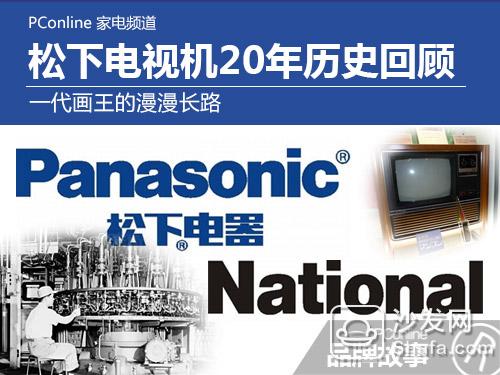
Overview: Panasonic Chinese "Panxia" (early called National, because in the United States already have companies using the National brand, so gradually began to change to Panasonic in 1986, 2008.10.1 date all unified Panasonic - Pana: all, all, Sonic: Music; Meaning of Perfect Music by Panasonic) Matsushita Electric Industrial Co., Ltd. was established by Matsushita Electric Co., Ltd. in 1918; it develops brand products involving household appliances, digital audio-visual electronics, office products, aviation, etc., and enjoys a global reputation; Panasonic has a marketing culture. Accumulation, making the company's brand jumped into the "World Top 500 Brands" ranking. On October 31, 2012, Panasonic announced that the final consolidated profit and loss (according to US accounting standards) for fiscal year 2012 (April 2012 to March 2013) is expected to be reduced from a profit of 50 billion yen to a loss of 765 billion yen.
Panasonic's major historical events:
1. In 1918, Matsushita Yukiko established Matsushita Electric Appliances Manufacturing Co., Ltd.
2. In 1923, we developed and launched a warhead-type lamp for bicycles. We adopted an agency system and expanded our market for Japan.
3. In 1929, the name of the company was changed to "Matsushita Electric Manufacturing Co., Ltd.".
4. In 1931, production of radios and dry batteries began.
5. In 1935, Matsushita Electric Trading Co., Ltd. was established and there were restrictions on reorganizing the company into shares.
In the 1950s, Matsushita Electric Co., Ltd., Kyushu Matsushita Electric Co., Ltd., Osaka Electric Seiki Co., Ltd. (now Panasonic Seiko Co., Ltd.), Matsushita Communications Co., Ltd., and Matsushita Electric Co., Ltd. were successively established.
7. In 1962, it cooperated with Dongfang Electric Co., Ltd. (now Matsushita Electric Transmission System Co., Ltd.).
8. In 1969, Matsushita Shou Electronics Co., Ltd. was established.
9. In 1973, Matsushita Kosuke was appointed as the advisor; Takahashi Ryutaro took office as president, and his annual sales exceeded 1 trillion yen.
10. In 1979, Matsushita Battery Industrial Co., Ltd. was established.
11. In 1988, Matsushita Electric Industrial Co., Ltd. and Matsushita Electric Trading Co., Ltd. were merged.
12, 1990, the acquisition of the United States MCA company.
13. In 1995, Matsushita Electric Industrial Co., Ltd. merged with Matsushita Hi-Electric Equipment Co., Ltd. to transfer 80% of the controlling shares of American MCA Corporation.
14. In 1996, sales of DVD players began.
15. On November 7, 2008, Panasonic announced the merger with Sanyo.
Panasonic made bulbs in the early years
Panasonic developed incandescent light bulbs in 1936. Matsushita Matsushita, the founder of Matsushita, established a company called "National Light Bulb Co., Ltd." in Osaka at that time. This is the first time Panasonic has involved the household lighting industry. However, the Toshiba bulb was completely preempted by the Toshiba bulb market. At the time, the Toshiba bulb was sold for 36 yuan. In order to compete with it, other brands could only attract consumers with a price advantage of 10 to 20 yuan. However, Panasonic did not follow the market. Instead, it sold the same price as the Toshiba bulb for 36 yuan. At the time, Matsushita Matsushita believed that only a single company had a monopolistic market that was not good. It was up to our company to work together in a reciprocal posture.
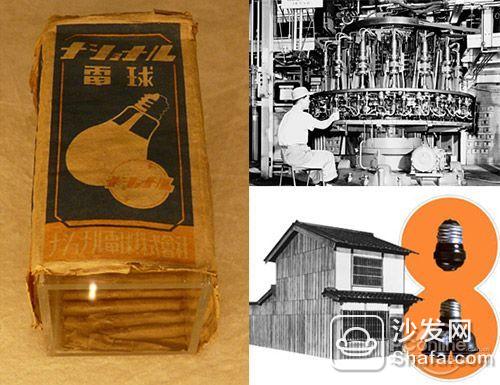
Panasonic produced about 50,000 to 60,000 incandescent light bulbs per month, but by the end of the Second World War in 1952, Panasonic and Philips of the Netherlands had established Panasonic Electronics Industries, a subsidiary that manufactures light bulbs and tubes. And built a large-scale factory in Osaka. The factory introduced the world’s first light bulb production equipment at the time and became the largest light bulb production plant in the country. Three million can be produced each month, and the output of this factory will rise 60 times after decades. And the introduction of Philips's technology, product quality has also been a leap-style development.
Panasonic's early television products
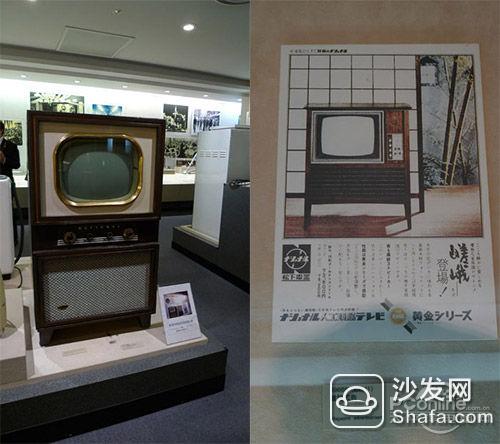
Panasonic's early television and television advertising
In 1951, Matsushita fortunately helped the United States and opened Panasonic's market in the United States. The initial product was a television set. As the original National brand has already registered in the United States, the brand “Panasonic†was established in 1955, and Panasonic is now the main brand of Panasonic Corporation. Prior to the unification of brands outside Japan, this brand focuses on audio-visual equipment products.

Panasonic TR005 Black & White TV, 1972
In 1972, Panasonic introduced a UFO-shaped TV, the TR005, under the Panasonic brand. The appearance of the TV is very avant-garde. Nevertheless, Panasonic began selling color TVs in 1960. In the domestic situation is the 80-era era, we can buy the National brand black-and-white TV in duty-free shopping malls.
In 1984, Matsushita Corporation of Japan introduced "Universal TV." The system's picture is 3.6 meters wide, 4.62 meters high, equivalent to 210 inches, can be placed in a large truck, in the streets and squares and other places where needed. The Panasonic's exclusive “High Brightness Colour LED†was used in the system. Even during the day, colorful and bright images can be obtained outdoors.
2 Panasonic TV History Review_CRT King of Era to the top
CRT era painting Wang Panasonic
In 1992, the second-generation painting king (aka: the new painting king) entered China (the first-generation painting king's data due to time reasons, the author did not find the whole, welcome the big gods to provide clues), by the black long-distance athlete - Karl Lewis did the endorsement. In 1993, the third generation of the King of Pictures (aka: King Chao's GF10 series) went public.

The Panasonic King of the Nets who purchased Sun's 94 years
In 1994, two exciting features were integrated into the King GF10 Series - dual high-frequency picture-in-picture and color video recorders. What are the three super three super? Panasonic's definition at the time was: super-era appearance, supernatural images, and super pure sound.
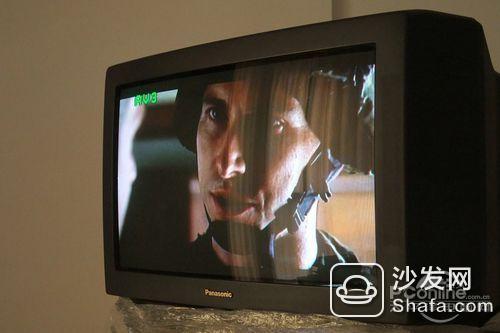
Panasonic WG10 series Ohno King TC-28WG12G
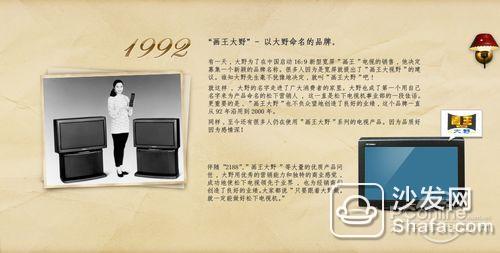
What is the meaning of Da Ye's painting king? This is inseparable from the miracle of 2188 sales (Click on the picture to enlarge)

89-90 Panasonic 2188 sold 350w units
Still in 1994, in order to meet the Toshiba dual-window series, Panasonic launched the first generation of Ono Kings - WG10 series.
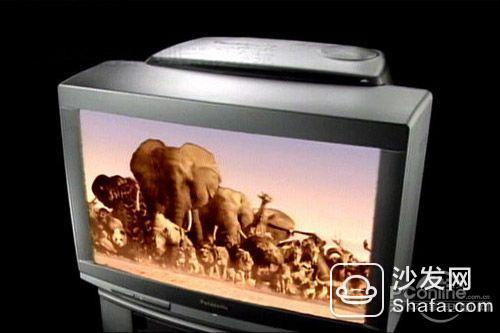
Panasonic GF30 Series
In 1995, to face the Toshiba rocket launcher, Panasonic introduced the GF30 series of three super kings equipped with an overhead woofer, and the WG20 series of the Ohno painting king. At the end of 1996, with the DVD-A130, A300 series of DVD players, the introduction of the three Super King 80 series, rear projection big wild King (rear projection is obviously a transition from CRT to tablet, each classic models are not many, this article Do not elaborate.)
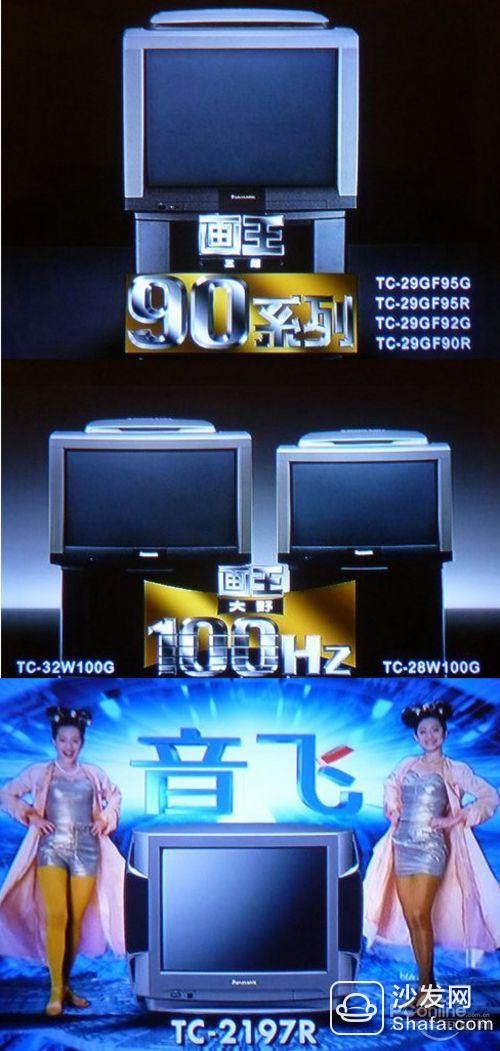
The last painting king and his spokesperson (Daw Ming Temple will see such a big S will not go crazy?)
At the beginning of the same year (1998), Matsushita also presented the 90th Series of Kings of Paint, equipped with a Hyun-Cahon tube. Unexpectedly, in the same year, Sony took out a flat WEGA. Draw 100Hz and 90 series, become the last king (including Jiaying series).
3 Panasonic plasma TV History _ era back to top
The era of gradual decline - Panasonic TV in plasma era
Plasma display panel (abbreviated as plasma), also known as plasma display panel, is a flat display screen. Light is emitted from the ions between two glasses and is emitted to the phosphor. Unlike liquid crystal displays, the emitted gas is not mercury-free but is made of a mixture of inert gas and helium. This gas is a harmless gas.
The plasma display is very bright (1000 lx or more), can display more colors, and can also create a larger area of ​​the display, with a maximum diagonal of 381 cm (150 inches). The plasma display also has a high contrast ratio to create a full black effect, which is especially suitable for watching movies. The thickness of the display is only 6 cm, together with other circuit boards, the thickness is only 10 cm.

Plasma panel display principle
The principle of plasma luminescence is to inject inert gas or mercury vapor into a vacuum glass tube. After the voltage is applied, the gas generates a plasma effect, emits ultraviolet rays, excites the phosphor to generate visible light, and uses the length of the excitation time to generate different brightness. In the plasma display, each pixel is produced by three different color (trichromatic) plasma emitters. It is particularly clear and distinct because it is each individual light that lights up at the same time. The plasma display has a life of about 50,000 to 60,000 hours. As the time of use increases, its brightness will decline.
In early 2000, plasma TVs were a very popular choice for high-definition flat-panel TVs. At the time, they had many advantages that LCD did not have, such as very deep black, superior contrast, fast response time, better color performance, and Wide viewing angle, and at the time it was not possible to enlarge the LCD panel. However, the ever-advanced manufacturing technology of ultra-large integrated circuits gradually relaxes the limitations of LCDs, such as gradually increased size, lighter weight, lower price, and comparable power consumption to plasma TVs.
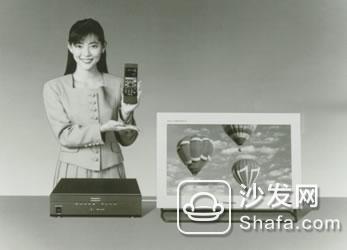
Panasonic's first plasma TV TH-26PD1
Panasonic’s first plasma TV was a 26-inch model, the TH-26PD1, and in 2003, the then-president of the company, Nakamura, decided to invest heavily in plasma TVs. He has a "plasma belief" that "plasma is brighter and more visible than liquid crystals." But the people around him did not think so. "If you listen to the opinions of technical experts, he will invest in liquid crystal. The advantage of LCD at that time is already obvious."
In 2005, after the opening of the first factory in Amagasaki, most people have already seen that plasma will fail. Hitachi Laboratories announced that it had withdrawn from the plasma camp, and Nakamura Bonf was still optimistic about the plasma and eventually dropped 600 billion yen.
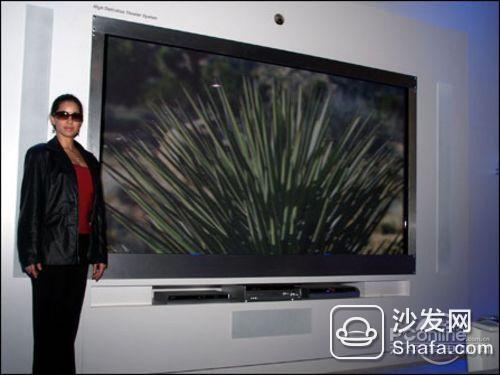
Panasonic 103-inch Full HD Plasma TV
With the increase in plasma capacity and technological capabilities, Matsushita has developed more and more high-performance plasma TVs. At CES 2006, Matsushita released a 103-inch plasma TV. In late 2006, however, analysts pointed out that LCDs will surpass plasma, especially those markets that previously used plasma as the main force. Another industry trend is the continued merger of plasma panel makers. There are about 50 TV brands in the market, and there are only 5 manufacturers. In the first quarter of 2008, global TV shipments indicated that CRT shipments were around 22 million units, LCDs were 21 million units, plasmas were 2.8 million units, and rear projections were 100,000 units.
On May 25, 2007, Panasonic and Hitachi announced the formation of a plasma TV strategic alliance to jointly fight Korean companies and LCD camps. Although the negative analysis continued, the development of the Panasonic plasma display did not stop, and its display size continued to increase.

Panasonic PZ700C
Faced with the sky-high LCD TVs, plasma TVs are becoming more and more incompetent. Especially in the FULL HD Full HD boom, the manufacturers of plasma TVs are obviously lagging behind.
In 2007, Panasonic introduced the PZ700C series of products of the year, which is the most powerful response from Panasonic. Although due to technical deficiencies, it was said that the full HD of the series was realized under the premise of sacrificing the brightness and did not solve the problem of heat dissipation and brightness. However, the PZ700's surprise for us is far greater than these regrets. Panasonic PZ700C uses Panasonic's latest G10 full HD plasma screen, resolution of 1920 × 1080, 900 lines of dynamic resolution, 10000:1 contrast, equipped with Panasonic's second-generation V-Real Pro image processing system and LZ series plasma TV The core V REAL PRO2 processor, this technology can effectively reduce noise.

At the 2008 CES exhibition in Las Vegas, Nevada, Panasonic Electronics showed the largest plasma TV at the time, with a display size of 150 inches (381 cm), 330 cm long, and a height of 180 cm.
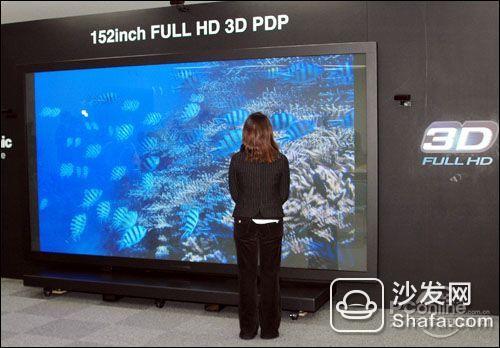
Panasonic 152-inch 3D Plasma TV
At the 2010 CES, Panasonic expanded its size to 152 inches, which was the largest plasma TV at the time.
However, even with such glory, the actual situation of plasma in the market is getting worse and worse, "have no fun." In June 2011, just as the president of AVC Corporation, Jinhe gave a conclusion to the plasma.
On the board of directors in July last year, he said publicly: "The third plant in Amagasaki should be suspended." This completely denied the Nakamura-Daping route. The directors were very surprised to hear the statement from Jin, but three months later, Matsushita invested 210 billion yen and the third factory in Amagasaki, which had been in operation for only a year and a half, ceased production. Panasonic’s company in Mobara-shi, Japan, also discontinued production. The first factory, Panasonic, lowered its shipment target for plasma TVs for the following year, down from the 5.7 million units shipped last year to 2.5 million units, and downgraded the scale by more than half.
"My own role has been completed. The direction of the future is very clear. It is up to you to complete. I hope that you will push forward your new round of business according to your own intentions." In early February, Daechi Hiroshi said to Tsukasu Kazuhiro. .
Summary: Panasonic TV has a similar development with Sony, both companies have excellent TV technology, but because of the misjudgment of LCD technology led to the gradual decline in recent years, according to Panasonic plasma TV products released this year From the situation, although the top-level models are still powerful, the competitiveness of the products from the low-end to mid-to-high-end products are declining. On the one hand, the prices of mid-to-high-end products have indeed decreased, but on the other hand, the previous generation's specifications shrink. Many enthusiasts are very depressed, and it is obviously difficult to absorb this part of buyers in the current product structure.
Looking back at Panasonic's future TV set, I believe Panasonic is still developing a new generation of display technology that cannot be quickly promoted due to cost issues, and the old product line lacks sufficient competitiveness. Panasonic’s roads in the next few years are clearly rugged. of. Like many enthusiasts, I also hope that this old painting king can have a comeback day, but this seems to be a long, slow road, and it may be even longer than it was before.
RF Electrode
Rf Electrode,Lumbar Disc Disorder,Endoscopic Application Instruments,High Frequency Generator
Dragon Crown Medical Co., Ltd. , https://www.dragoncrownmed.com